Tabouli is a bright salad with fresh herbs, juicy tomatoes, and crisp cucumber tossed in a lemon dressing.
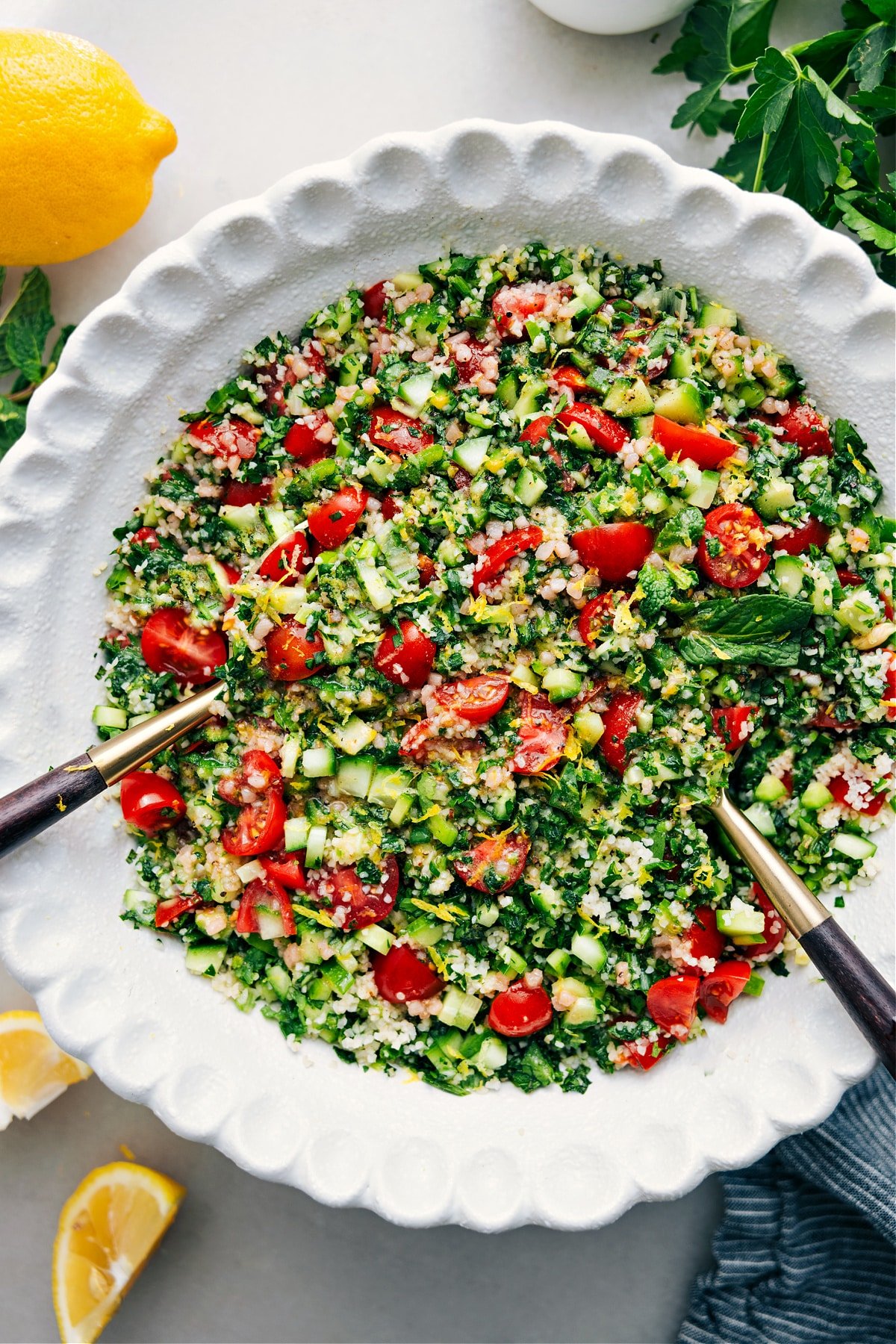
Tabouli Recipe From Dubai!
A couple of years ago, while traveling through Dubai and the Maldives, I kept seeing two salads everywhere—Tabouli and Fattoush.
These salads were served with almost every meal, along with plenty of hummus and baba ghanoush. Since coming home, I’ve made this salad so many times, and I’m finally sharing my take on it!
This recipe is inspired by one I had in Dubai, with a few extra ingredients in the dressing to add even more flavor.
Quick Tip
Tabbouleh vs. Tabouli – What’s the Difference?
Just the spelling! Both names refer to the same fresh salad. How to Say It: it’s pronounced “tuh·bu·lee” (here’s a video).
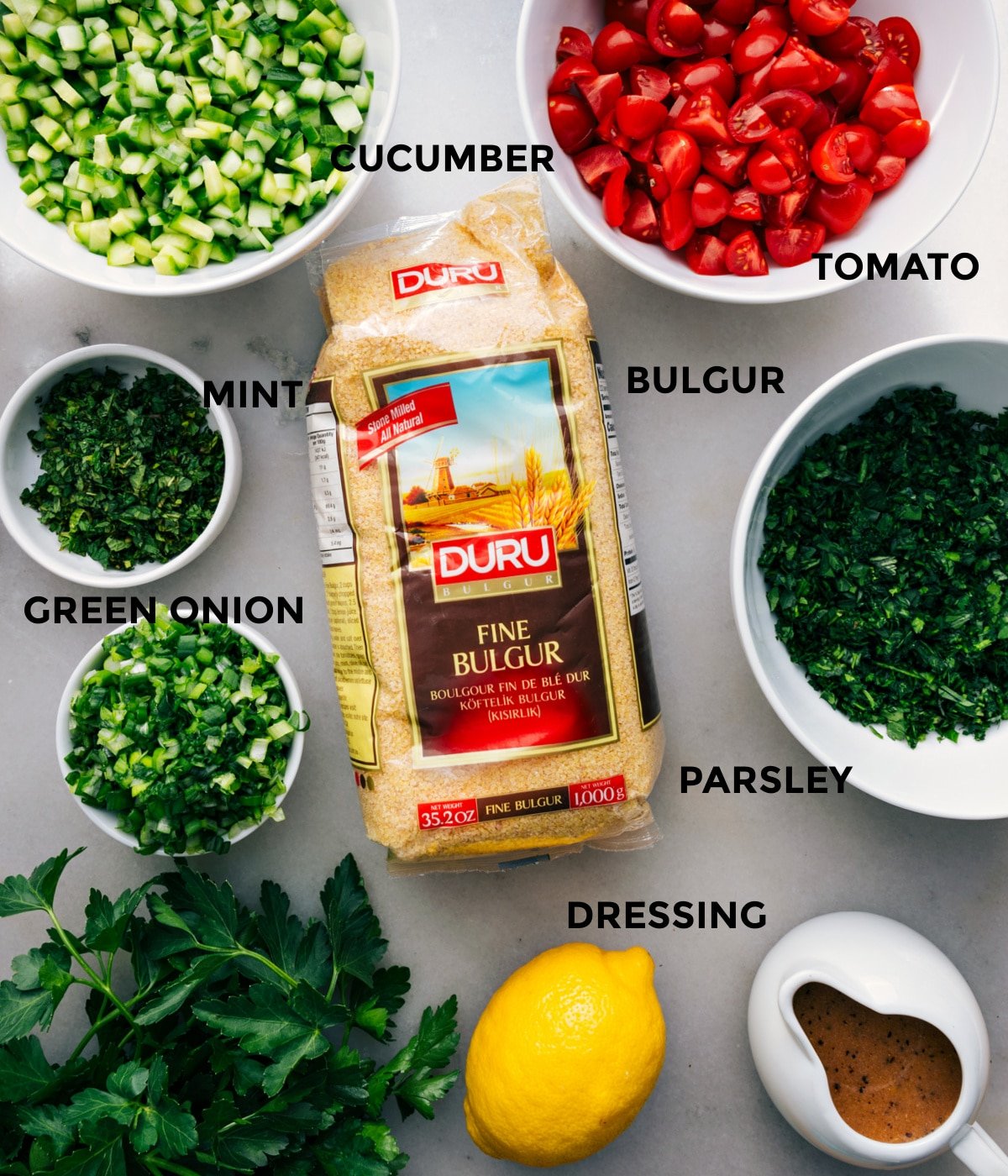
Ingredients
- Bulgur wheat: Fine bulgur gives the best texture and it’s quick to prepare. Coarse bulgur will need to be cooked differently.
- English cucumbers: Less watery and more flavorful than regular cucumbers.
- Cherry tomatoes: A serrated knife makes them easier to chop.
- Fresh mint: Bright and fresh! Chop small for even flavor.
- Flat-leaf parsley: More flavor than curly. Hand-chop for the best texture.
- Green onions: Use the white and light green parts.
Tabouli Dressing
- Olive oil: Extra virgin for the best flavor.
- Lemons: Fresh juice and zest add brightness and the best flavor.
- Garlic: Chop small or press finely.
- Ground cumin: Adds warmth and depth.
- Honey: Balances the tang.
- Dijon mustard: Helps slightly thicken the dressing.
- Red wine vinegar: Boosts the flavor.
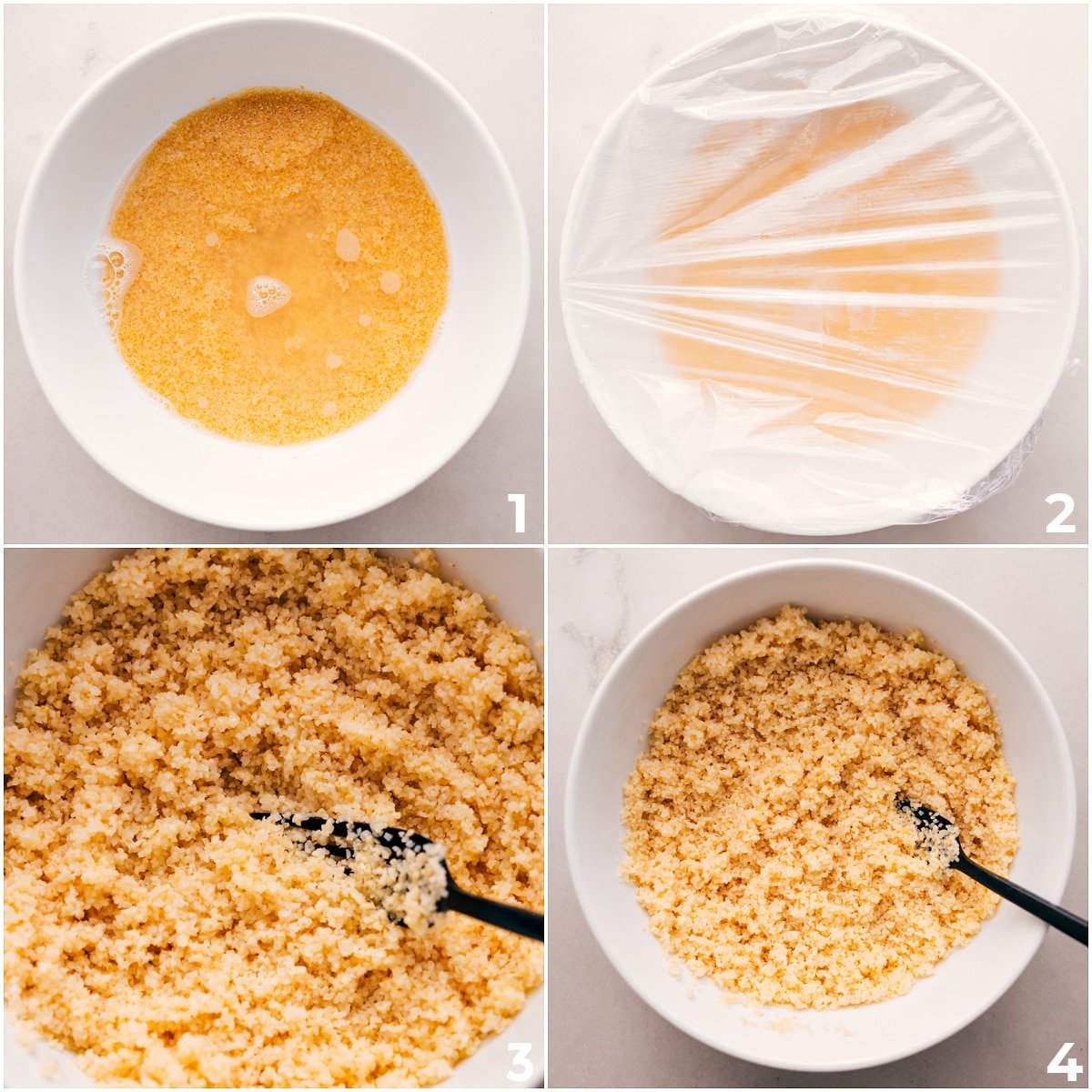
Switch Things Up
- Couscous Tabouli: Swap bulgur for small couscous. It cooks fast, just like bulgur, since it’s tiny pasta.
- Quinoa: Use quinoa for a gluten-free option. Quinoa is a seed, not a grain, making it great to use.
- Add Avocado: Not traditional, but diced avocado adds a creamy touch. That’s the best part of homemade—make it your own!
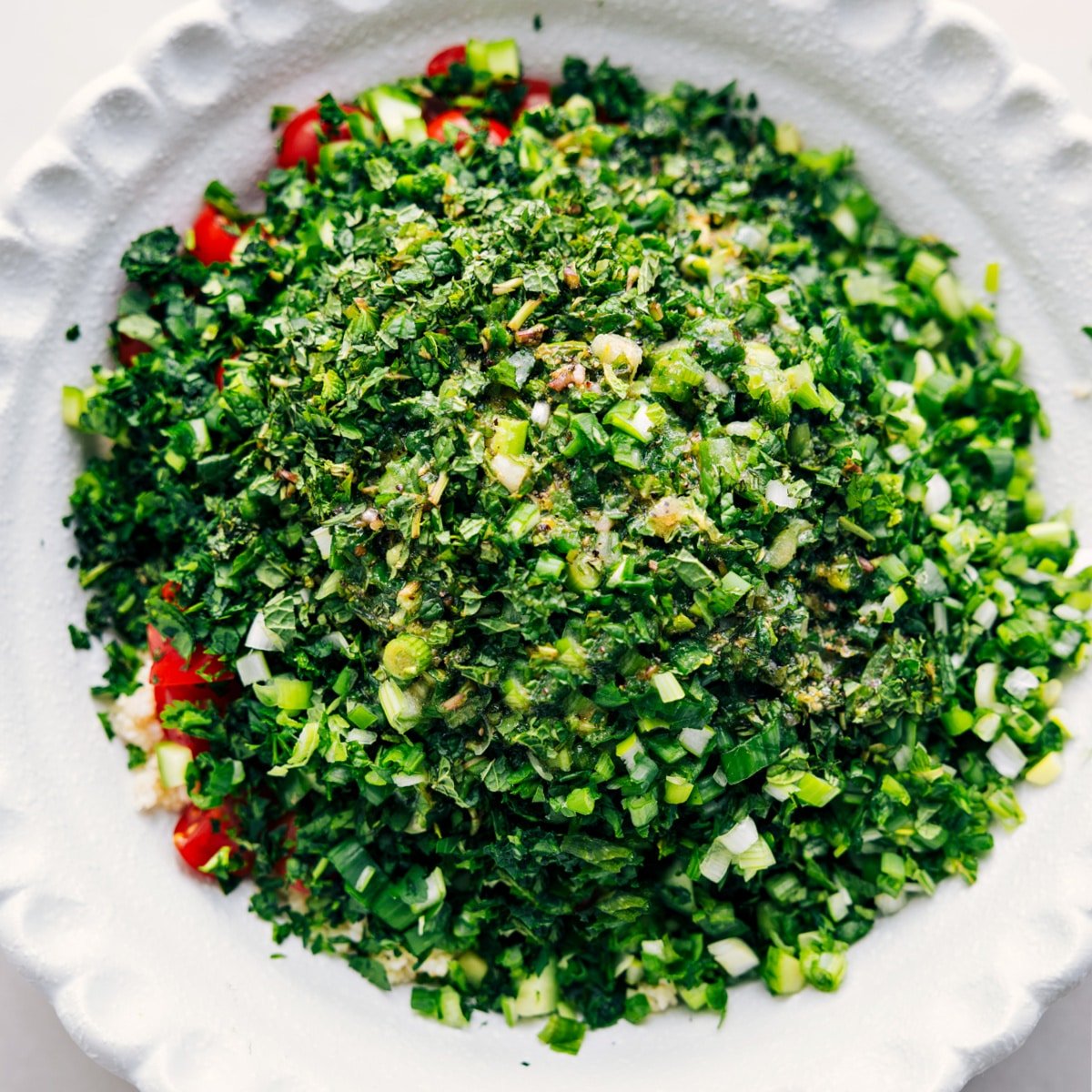
Adding Protein
Boost the protein with roasted or air-fried chickpeas, grilled chicken, flank steak, or salmon.
How To Eat Tabouli
Traditionally part of a meze or served with proteins, this works like a fresh salsa. I love it with grilled meat, warm pita, and hummus.
- As a Side: Great with grilled meats, kebabs, or falafel.
- With Pita: Scoop with warm pita or pita chips.
- In Wraps: Add to wraps or sandwiches for a fresh element.
- Over Greens: Pile onto lettuce or mix into a salad.
Storage
Store in an airtight container for 2–3 days. Green onion flavor gets stronger over time. Stir before serving and add seasoning or lemon if needed. Tabouli doesn’t freeze well.
More Delicious Salad Recipes:
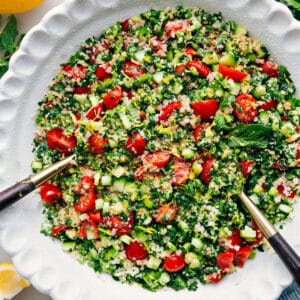
Tabouli (Tabbouleh)
Equipment
- Wide-mouth Mason Jar or other sealable container
Ingredients
- 3/4 cup fine bulgur wheat see note 1
- Salt and pepper
- 1-1/2 cups diced English cucumber see note 2
- 2 cups quartered cherry tomatoes
- 1/3 packed cup finely chopped fresh mint
- 1 packed cup finely chopped flat-leaf parsley 2 bunches, see note 3
- 3/4 cup finely chopped green onions 1 bunch
- 1/4 cup olive oil
- 1 lemon
- 1 teaspoon minced garlic
- 1 teaspoon ground cumin
- 1-1/2 teaspoons honey
- 1 tablespoon Dijon-style mustard
- 2 tablespoons red wine vinegar
Instructions
- Bring 1-1/4 cups water to a boil. Add bulgur to a large glass bowl, sprinkle with salt, and pour the boiling water over. Stir, cover tightly with plastic wrap, and let sit at room temperature for 15–25 minutes or until all water is absorbed. Remove plastic wrap, fluff with a fork, and let cool to room temperature. For faster cooling, place in the fridge. Bulgur can be made ahead for easy prep later.
- Zest and juice lemon to get 1/2 teaspoon zest and 1-1/2 tablespoons juice. Add to a wide-mouth jar with all other dressing ingredients. Season to taste (I add 3/4 tsp salt and 1/2 tsp pepper). Shake vigorously to combine and place in the fridge until ready to use.
- Add completely cooled bulgur, cucumbers, tomatoes, mint, parsley, and green onions to a large bowl. Toss gently. Add dressing and toss again. Taste and adjust seasoning to taste. Serve or refrigerate until ready to serve. This salad gets tastier after it's had some time to chill!
Video
Recipe Notes
Nutrition
Nutrition information is automatically calculated, so should only be used as an approximation.
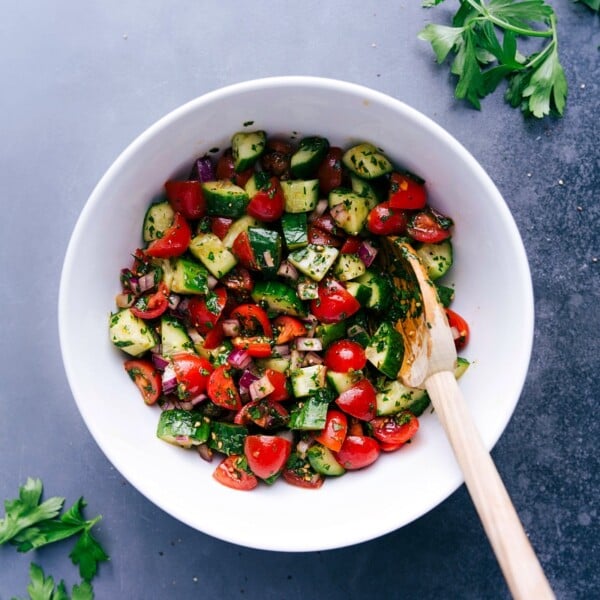
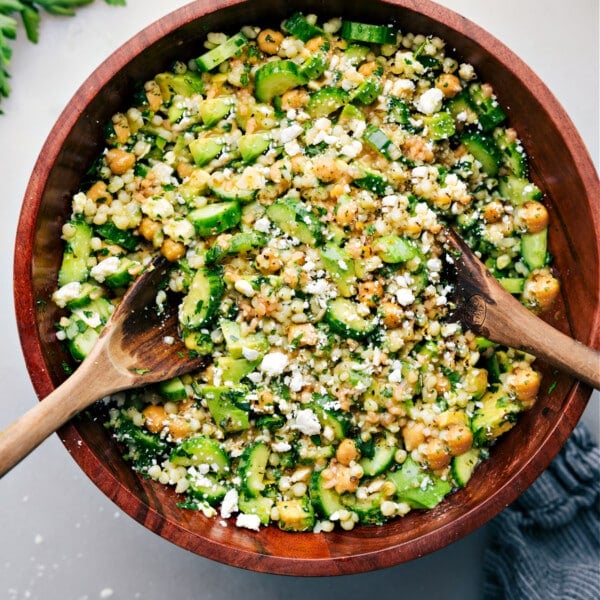
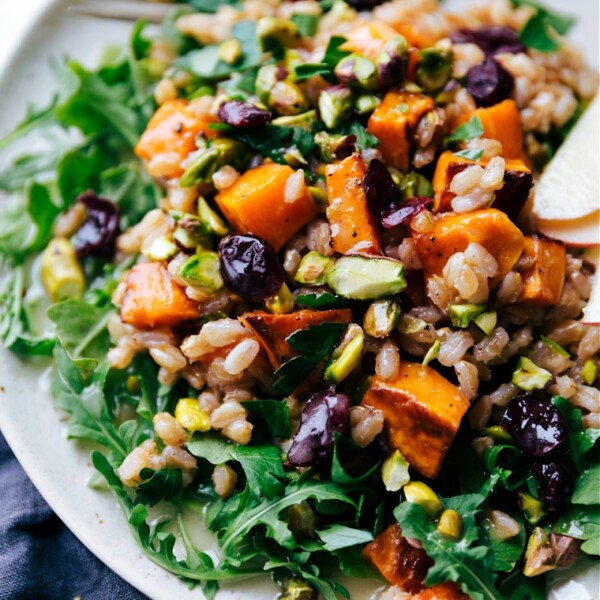
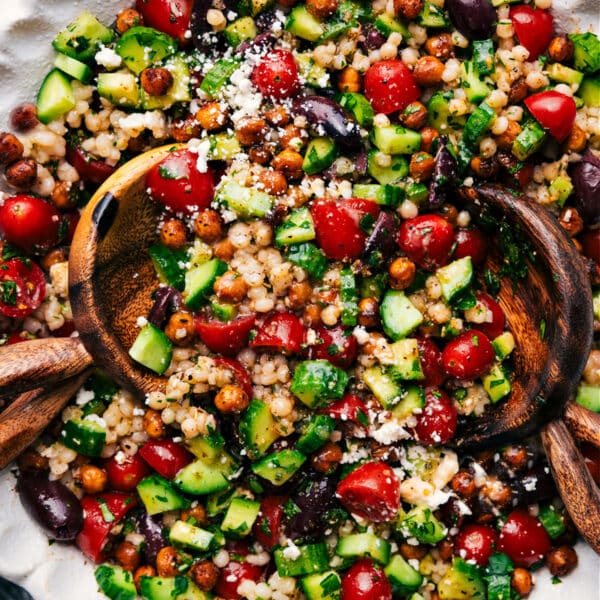


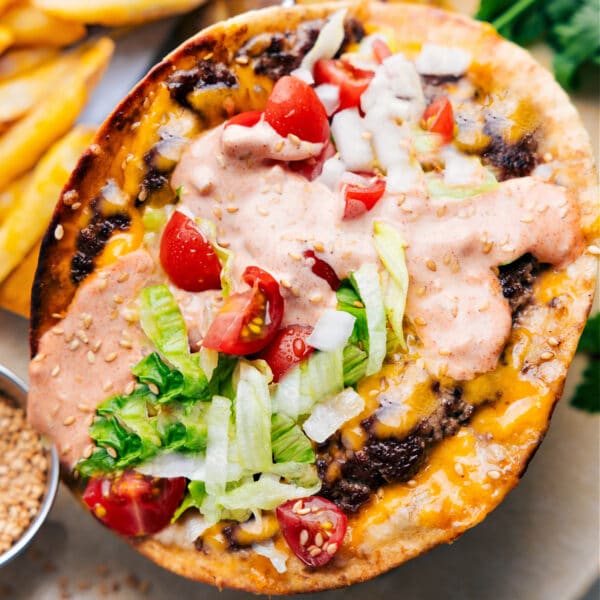
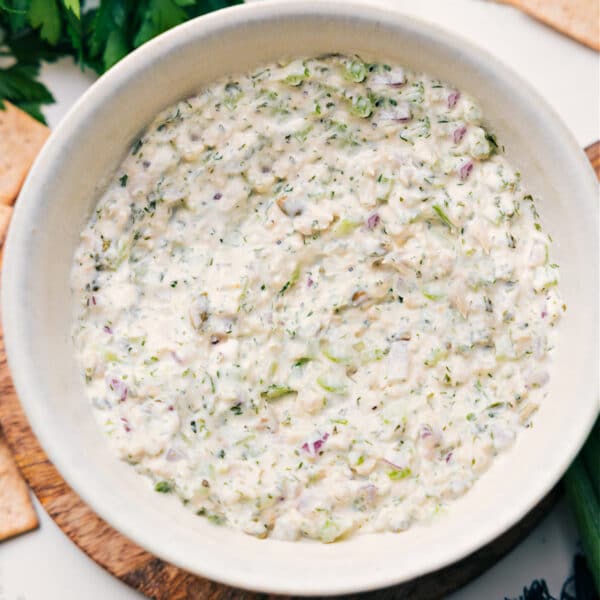
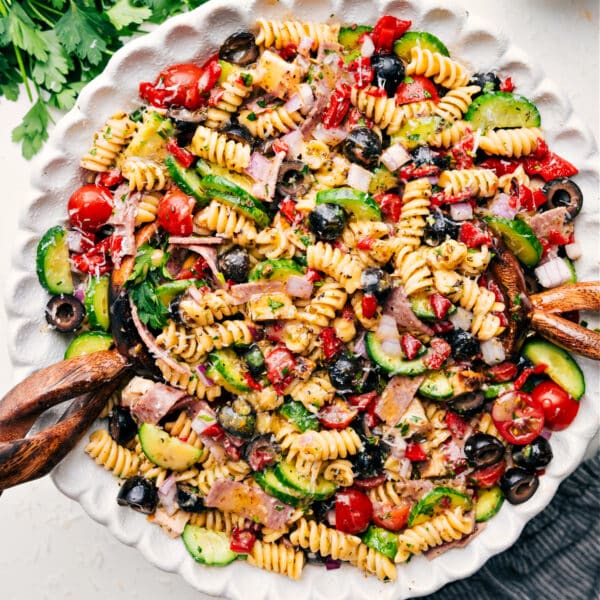
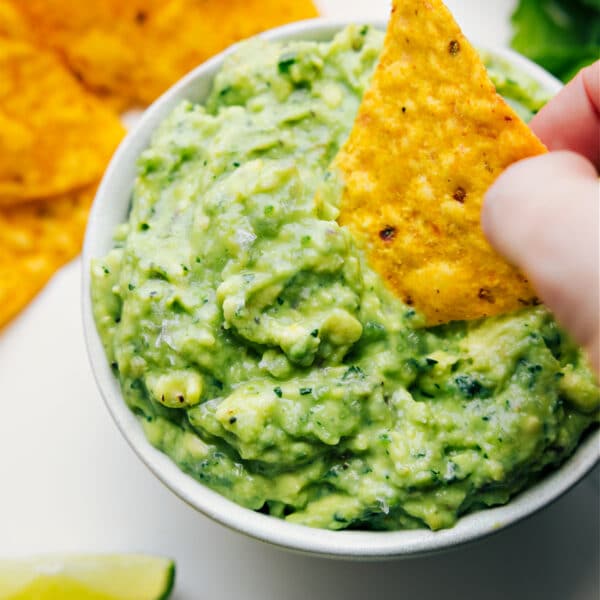









I’m Chelsea’s sister and after she got back from Dubai she started making this tabouli and her hummus and I swear it’s the most flavorful and delicious dish I’ve ever had! It’s a repeat in my house now!
Tabouli is one of my all-time favorite foods. Unfortunately, since I need to eat gluten free and a little lower in carbs I can’t eat the real stuff but several years ago I discovered that hemp hearts make a lovely tabouli. The recipe I use is very much like yours. As soon as I get more hemp hearts I’ll try yours.
Wow, what a great tip! So excited for you to try! Thanks Denise! 🙂